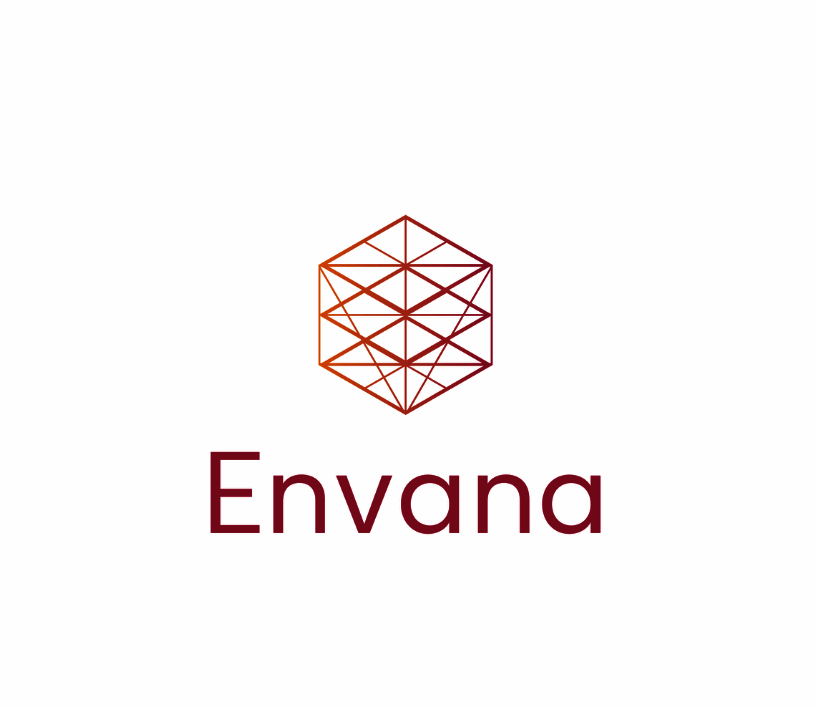Indeed, the majority of emissions management software is compatible with a variety of platforms and devices, including PCs, tablets, and smartphones. This makes it simple for users to monitor and control emissions data while traveling or from different places. Furthermore, a lot of software applications are compatible with many operating systems, which enables a broad user base to utilize them.
List of Best Emissions Management Software
Enviance is a EHS software that offers businesses real-time and crucial information. Its intuitive and contemporary interface makes it effortless to navigate. From audit and industrial safety to incident and occupational health management, Enviance p...Read More Enviance
Locus, the innovative cloud-based water quality management software designed to simplify regulatory reporting. Access and manage all your environmental data from anywhere, giving you full control and improving efficiency. Streamline compliance effort...Read More Locus
ProcessMAP is the leading software for EHS management, empowering organizations with a SaaS-based platform to proactively mitigate risks. Our all-in-one solution encompasses audit, environmental, inspection, safety risk, and injury management, promot...Read More ProcessMAP
Cority is a versatile and all-encompassing EHS software designed to meet the needs of organizations, regardless of their size. Its inclusive features include integrated data and functions, performance analysis, and compliance checks for employees. Wi...Read More Cority
Envirosoft is the premier solution for streamlining oil and gas emissions management and reporting. Our advanced software and consulting services simplify data handling, ensure regulatory compliance, and support emission reduction initiatives. Our cu...Read More Envirosoft
Enablon is software platform that enables businesses to effectively manage water resources and meet water stewardship obligations. It helps companies maintain compliance with regulations and demonstrate responsible use of water by proactively monitor...Read More Enablon
Gensuite EHS Management Software solution for streamlining safety data management. Our user-friendly applications cover all facets of a top-performing safety program, prioritizing employee health and ensuring compliance with OSHA reporting and OHSAS...Read More Gensuite
Envana Catalyst is a software solution designed for managing greenhouse gas emissions and carbon accounting. It provides businesses with a holistic view of their emissions to facilitate informed decision-making. With detailed tracking and analysis of...Read More Envana Catalyst
Nasdaq Metrio is the ultimiate sustainability reporting solution. Our advanced software makes managing ESG data effortless and promotes transparency, all while effectively communicating your companys sustainability efforts. Streamline your reporting...Read More Nasdaq Metrio
FLINTpro solution for accurately measuring, tracking, and recording carbon emissions for multiple businesses. This advanced software utilizes innovative technology to quickly process large datasets, providing in-depth analysis and management of carbo...Read More FLINTpro
FigBytes is sustainability management solution that empowers companies to measure and communicate their sustainability and ESG impacts. By seamlessly integrating sustainability metrics into performance, strategy, and branding, FigBytes enables busine...Read More Figbytes
AQMIS Cloud solution for remote access convenience. Streamline your gas emissions management, source monitoring, model running, permit acquisition, and air quality forecasting with our easy-to-use, web-based dashboard. Keep track of your emissions fr...Read More AQMIS Cloud
Learn More About Emissions Management Software
- What Is Emissions Management Software?
- What Are The Recent Trends In Emissions Management Software?
- Benefits Of Using Emissions Management Software
- Important Factors To Consider While Purchasing Emissions Management Software?
- What Are The Key Features To Look For In Emissions Management Software?
- Why Do Businesses Need Emissions Management Software?
- How Much Time Is Required To Implement Emissions Management Software?
- What Is The Level Of Customization Available In Emissions Management Software?
- Which Industries can benefit the most from Emissions Management Software?
- Conclusion
What Is Emissions Management Software?
Often referred to as greenhouse gas (GHG) management software, emissions management software is a technology that helps companies track, monitor, and report their carbon emissions and other environmental impacts. It makes it possible for businesses to precisely calculate their greenhouse gas footprint, pinpoint areas in need of development, and create plans and projects to lower their overall carbon footprint.
For businesses trying to comply with emissions reporting standards like the Carbon Disclosure Project (CDP), the Global Reporting Initiative (GRI), and the Greenhouse Gas Protocol, this software is crucial. Additionally, it helps companies monitor their progress toward sustainability objectives and show stakeholders, clients, and investors that they are committed to minimizing their environmental effect.
A variety of features and capabilities are available in emissions management software to support the full emissions management process. These include of gathering and analyzing data, estimating and calculating emissions, monitoring and reporting emissions, forecasting and modeling scenarios, and evaluating sustainability performance. The ability to automate and expedite the emissions reporting process is one of the main advantages of utilizing emissions management software.
Businesses can save time and money by doing away with the necessity for manual data collecting and lowering the possibility of human error. Additionally, it offers a consolidated database that houses all emissions-related data, making it simple to access for analysis and reporting. Businesses should take into account a number of variables when selecting an emissions management software, including the program's reporting and analytical features, data gathering capabilities, compatibility with pertinent emissions reporting requirements, and interaction with current systems.
The software's scalability and adaptability must also be taken into account in order to support the company's sustainability ambitions and goals as well as future reporting requirements. All things considered, companies wishing to precisely measure, monitor, and lessen their carbon footprint and overall environmental impact must have emissions management software. By purchasing this software, businesses can show their dedication to building a more sustainable future while also improving their sustainability performance and maintaining compliance with emissions reporting regulations.
What Are The Recent Trends In Emissions Management Software?
As companies face increasing pressure to reduce their environmental impact and meet regulatory requirements, the demand for emissions management software is on the rise. This has led to several key trends emerging in the industry. Here are the most significant recent trends in emissions management software that you should be aware of as a buyer:
1. Cloud-Based Solutions: The rise of cloud technology has significantly impacted the emissions management software market. Traditional on-premises solutions are being replaced by cloud-based systems, which offer more flexibility, scalability, and accessibility. They also come with lower upfront costs and require minimal IT involvement, making them a more attractive option for businesses.
2. Integrated Solutions: As companies look to streamline their operations and improve efficiency, there has been a growing demand for emissions management software that can integrate with other systems such as energy management, asset management, and compliance tracking. This allows for better data sharing and analysis, leading to more comprehensive emissions management.
3. Real-Time Monitoring: With the increasing focus on reducing carbon footprints, there is a greater need for real-time monitoring of emissions. This can be achieved through connected devices and sensors, which can capture and transmit emissions data in real-time. As a result, businesses can take immediate action to reduce their emissions and stay in compliance.
4. Artificial Intelligence: As technology continues to advance, we are seeing a growing use of artificial intelligence (AI) in emissions management software. This includes using AI algorithms to analyze data, identify trends and patterns, and make more accurate predictions. This can help companies better understand their emissions and develop more effective strategies to reduce them.
5. Data Visualization: As the amount of emissions data collected increases, the need for effective data visualization tools becomes crucial. Emissions management software now offers advanced visualization capabilities, such as interactive dashboards and customizable reports, allowing businesses to gain meaningful insights from their emissions data. Overall, these trends show that the emissions management software market is evolving to meet the changing needs of businesses. As a buyer, it is essential to consider these trends when evaluating different software solutions to ensure you are investing in a solution that will support your emissions management goals now and in the future.
Benefits Of Using Emissions Management Software
Globally, companies and sectors are starting to place a high premium on emissions management. Companies must efficiently monitor and control their emissions in light of tighter restrictions and rising public concern about the effects on the environment. Software for emissions management can help with this. The following are some of the main advantages of adopting emissions management software in the workplace:
1. Precise And Instantaneous: Monitoring of Emissions Emissions data is tracked and recorded in real-time by emissions management software using cutting-edge monitoring technologies. This enables companies to have a clear picture of their carbon impact and any possible problems with compliance. Businesses can take proactive steps to lower their emissions and make well-informed decisions with the help of precise and current data.
2. Streamlined Reporting For Compliance: It can be difficult and time-consuming to comply with emissions requirements. This is made easier by emissions management software, which automates the process of gathering and reporting data. By doing this, companies can meet compliance standards while saving time and money and concentrating on their main business.
3. Financial Savings: Businesses can find opportunities to lower their carbon footprint and save money by precisely monitoring and controlling emissions. By analyzing data and offering insights into energy inefficiencies, emissions management software enables businesses to make better decisions and put strategies into place that will lower emissions and save operating expenses.
4. Reputation And Environmental: Impact Emissions management software assists companies in lowering their environmental impact in addition to cost savings and regulatory compliance. Businesses can improve their reputation and brand image by showcasing their dedication to reducing their environmental effect, as public awareness and demand for sustainable practices are growing.
5. Improved Security Of Data: All emissions data is kept in a safe, centralized system by emissions management software. By doing this, the possibility of data loss is removed, and sensitive emissions data integrity and confidentiality are guaranteed. Businesses may access their emissions data from any location in the globe using cloud-based options, which offer more flexibility and user-friendliness.
Important Factors To Consider While Purchasing Emissions Management Software?
A crucial tool for businesses trying to track and lessen their environmental impact is emissions management software. Selecting the best software might be difficult given the wide range of solutions on the market. The following crucial elements should be taken into account when buying emissions control software in order to assist you in making an informed choice:
1. Features And Functionality: It's important to look at the variety of features and functionality that emissions management software provides while assessing it. Seek out software that can monitor and report on waste, water, and air emissions, among other kinds. Additionally, take into account whether the software can be integrated with other systems, including sustainability reporting tools or energy management systems.
2. Compliance And Regulatory Requirements: Many firms place a high premium on adhering to environmental rules. Verify that the software you select will enable you to fulfill your compliance requirements by delivering precise and timely reports. Seek out software with integrated compliance tracking capabilities and the ability to produce reports that regulatory agencies require.
3. Data Analysis And Management: Since emissions data might be varied and complex, it's critical to select software that can effectively handle and analyze this data. To properly monitor and evaluate your emissions performance, look for tools that can manage big data sets and offer comprehensive analytics and visualizations.
4. User-Friendly Interface: Since it affects employee adoption and ease of use, a user-friendly interface is essential for any product. Choose software that has an easy-to-use interface that can be used by staff members without requiring a lot of training.
5. Scalability And Customization: Every company has different reporting needs and sustainability objectives. Make sure the software you select is scalable to handle future expansion and modifications to your emissions management plan, and that it can be tailored to your unique requirements.
6. Customer Support And Training: For emissions management software to be implemented smoothly and used effectively, prompt and dependable customer service and training are essential. Ask the vendor about their training programs and customer support services when comparing various software solutions. You may choose the best emissions management software to suit the unique requirements of your company and assist you in reaching your sustainability objectives by taking these criteria into account. Before making a purchase, don't forget to do extensive research and weigh your options to make sure you're getting the greatest deal.
What Are The Key Features To Look For In Emissions Management Software?
To make sure they are investing in the best possible emissions management software for their business, purchasers need take into account a number of important aspects.
1. Real-Time Monitoring: The capacity of an emissions management software to enable real-time emission monitoring is one of its most important characteristics. This enables businesses to monitor their emissions levels and make the required modifications to lessen their impact on the environment.
2. Automated Data Collection: To reduce human error and get precise emissions data, look for software that automates data collecting. Additionally, by eliminating the need for manual data entry, this functionality saves time and money.
3. Customizable Reporting: The program should be able to produce reports that are adaptable to the particular requirements of the business. Providing thorough insights into emissions levels, patterns, and possible areas for improvement is part of this.
4. Compliance Monitoring: An all-inclusive emissions control program must to be able to monitor adherence to pertinent laws and guidelines. This guarantees that businesses are fulfilling their environmental obligations and helps them avoid any penalties or fines.
5. Integration With Other Systems: Selecting software that can interface with other systems, such as asset management and energy management software, is crucial for streamlining procedures and enhancing efficiency.
6. Emissions Forecasting: Based on past data and dynamic variables like production levels and meteorological conditions, an efficient software program should be able to predict future emissions levels. This enables businesses to proactively prepare measures for reducing emissions.
7. User-Friendly Interface: Search for software that has an intuitive, simple-to-use interface. Employees will find it easy to use, and reliable data gathering will be guaranteed. 8. Mobile capability: Software must have mobile capabilities in the current digital era. This gives consumers more freedom and convenience by enabling remote access and monitoring.
9. Customer Support: To get help with any technical problems or updates, pick a software provider that provides dependable customer assistance. This will help guarantee the software runs smoothly and answer any queries or worries that could come up.
10. Scalability: A company's requirements for emissions management will alter as it expands and changes. Selecting software that is flexible and adaptable to these changes without sacrificing its efficacy is crucial. Customers can choose an emissions management software that best suits their company's demands and objectives by taking into account these important aspects.
Why Do Businesses Need Emissions Management Software?
A crucial tool for companies trying to efficiently track and lower their carbon impact is emissions management software. With sustainability and environmental responsibility becoming more and more important in today's society, it is imperative that businesses identify their emissions output and take action to reduce it. Software for emissions management can help with this.
Businesses can precisely gather and monitor information on their energy use, greenhouse gas emissions, and other environmental effects with the aid of this program. This enables businesses to set reduction targets and pinpoint areas for improvement in addition to helping them adhere to legal obligations and reporting specifications.
Additionally, companies may generate reports and analyze data with emissions management software, which gives them important information about trends and patterns in their emissions. Making educated judgments on how to cut emissions and improve environmental sustainability is possible with the help of this knowledge. Software for emissions management can also result in long-term financial savings for companies.
Businesses can reduce operating expenses and boost their bottom line by spotting opportunities for waste reduction and energy efficiency. Lastly, a company's dedication to environmental sustainability is demonstrated by its investment in emissions management software. In the end, it increases trust and loyalty by meeting stakeholder expectations, attracting environmentally concerned consumers, and enhancing the brand's reputation.
How Much Time Is Required To Implement Emissions Management Software?
Depending on the product and organization, the time required to implement emissions management software can vary. On average, though, a complete deployment can take three to six months. This covers personnel training, data migration, and initial setup. The software must be set up throughout the setup procedure to meet the unique requirements of your business and industry standards.
Because it entails creating data fields, designing reports, and planning out workflows, it may take some time. This process could take longer if your organization has more complicated emissions management requirements. Another essential phase in putting emissions management software into practice is data migration. This entails moving current data to the software from spreadsheets or paper documents.
This can take a few weeks to a few months, depending on the quantity and quality of the data. Another crucial step in the deployment phase is employee training. To track and manage emissions, your team will need to become proficient with the program. The time of this training can change based on your employees' expertise level and the software's complexity.
It is crucial to remember that the software provider's and your team's availability and responsiveness may also have an impact on how long a deployment takes. Effective communication with the provider and your team is essential to a quick and seamless deployment process.
Overall, even while it may take a few months to establish emissions control software initially, the long-term advantages greatly exceed the time commitment. Your business can enhance its environmental impact, adhere to rules, and eventually cut expenses if it can precisely monitor and control emissions.
What Is The Level Of Customization Available In Emissions Management Software?
A variety of customization options are available in emissions management software to satisfy the unique requirements of various businesses and industries. These solutions are intended to assist companies in tracking, evaluating, and lowering their carbon emissions while still adhering to environmental standards. The particular emissions management software you use will determine how much customisation is possible.
To meet the specific needs of their customers, the majority of trustworthy providers do, nevertheless, provide a significant degree of customization. Configuring emissions management software to gather data from several sources, including energy meters, HVAC systems, automobiles, and production equipment, is one of the primary customisation choices available. This enables companies to precisely track their emissions in real time and pinpoint areas in need of development.
Setting emissions reduction goals and monitoring progress toward them is a crucial component of emissions management software customization. Businesses who have set sustainability targets and wish to keep a close eye on their progress will find this tool very helpful. Additionally, reporting and analytics customization possibilities are provided by emissions management software.
Companies can modify the program to create dashboards and reports that are particular to their requirements, including industry-relevant visuals and key performance indicators. Additionally, integrating the software with other systems, including customer relationship management (CRM) or enterprise resource planning (ERP) systems, is an option provided by many emissions management software suppliers. This simplifies the emissions management procedure and permits a smooth data flow.
Which Industries can benefit the most from Emissions Management Software?
The use of emissions management software is most appropriate for industries that use a lot of energy and produce a lot of pollutants. These sectors include oil and gas production, manufacturing, transportation, and power generation. Let's examine each sector in more detail to see how this kind of software can help them.
1. Manufacturing Sector: Emissions management software can assist businesses in the manufacturing sector in monitoring and lowering their carbon impact. Because manufacturing requires a lot of energy and produces a variety of pollutants, controlling and lowering these emissions is essential to sustainability and regulatory compliance. Manufacturers may pinpoint areas for improvement and put plans in place to lessen their environmental effect by using emissions management software, which can track and report on all kinds of emissions, including greenhouse gases, air pollutants, and wastewater discharges.
2. Power Generating Industry: There is growing pressure on the power generating sector, which encompasses both conventional and renewable energy sources, to lower emissions and transition to greener energy sources. Power firms can monitor and control their emissions levels and improve the efficiency of their operations with the help of emissions management software. Cost reductions, enhanced environmental performance, and adherence to intricate rules are all possible outcomes of this.
3. Transportation Sector: The transportation sector contributes significantly to air pollution and a large amount of greenhouse gas emissions. Transportation businesses may track and evaluate their emissions, find wasteful practices, and put strategies in place to lessen their environmental effect by using emissions management software. Route optimization, switching to more fuel-efficient cars, and adding alternative fuels to their fleet are a few examples of how to do this.
4. Oil And Gas Business: The business is coming under more and more attention for its effects on the environment as both production and consumption of oil and gas continue to climb. To guarantee regulatory compliance and lower their overall carbon footprint, oil and gas businesses can use emissions management software to monitor and control their emissions, including methane leaks and flaring, in real-time. Additionally, this may result in lower expenses and increased operational effectiveness.
Conclusion
In conclusion, any firm trying to reduce its environmental impact and adhere to rules must select the appropriate emissions management software. Buyers should evaluate their individual needs and objectives, take into account the features and capabilities of the software, and thoroughly examine the company's reputation and customer service before making a choice. Scalability and interaction with current systems are other crucial factors to take into account.
Buyers can make an informed choice that fits their specific needs and budget by being aware of the many parts of emissions management software, such as data gathering, reporting, and analysis. Additionally, in order to maximize productivity, buyers should seek software that integrates artificial intelligence and other cutting-edge solutions due to technological breakthroughs.
Furthermore, taking into account the software's compatibility with various hardware and operating systems helps guarantee a smooth installation and improve user experience. To guarantee a seamless transfer and continued technical help, it is also wise to ask about training and support options.
Ultimately, purchasing emissions management software increases operational effectiveness and lowers costs while also assisting businesses in lowering their carbon footprint. Customers can choose the best emissions management software for their company's requirements with confidence if they adhere to these recommendations and carry out in-depth research.
Emissions Management Software FAQ's
Can Emissions Management Software Be Accessed Across Multiple Devices And Platforms?
Is Emissions Management Software Future-Proof And Adaptable To Emerging Technologies Like Ai, Blockchain Or Iot?
Indeed, emissions management software is made to be flexible and future-proof, ready to adjust to new technologies like blockchain, artificial intelligence, and the Internet of Things. To maintain their durability and applicability, these software programs are regularly updated to take advantage of new developments and technology.
Emissions management software is well-suited to manage the integration of these cutting-edge technologies, offering organizations precise and effective emissions control solutions. It can gather and analyze data in real-time.
Is There A Free Trial Offered To Assess Emissions Management Software Before Committing?
Yes, a lot of companies who sell emissions control software give their clients a chance to try the program out for free before deciding to buy it. This enables companies to assess the software's features and capabilities and come to a well-informed conclusion.
Users can also evaluate the system compatibility and simplicity of use during the free trial. Before spending, it is advised to take advantage of free trials to make sure the software fits the unique requirements of the business.
Does Emissions Management Software Offer Data Security Features And Meet Regulatory Compliance Standards?
Indeed, strong data security features are included into emissions management software to guard against unwanted access to private data. It also complies with regulatory compliance standards established by regulatory agencies like the Environmental Protection Agency (EPA).
This lowers the possibility of fines and penalties by ensuring that companies can accurately track and report emissions data. To further improve data security, emissions management software also includes tools for data encryption and backups.
Can Emissions Management Software Integrate Seamlessly With Existing Tools And Platforms?
It is possible for emissions management software to easily integrate with current platforms and tools, which facilitates the tracking and monitoring of emissions data. The software can interact with other systems, including SCADA and ERP systems, by using APIs and data connections.
The accuracy of emissions reporting is increased and real-time data sharing is made possible by this integration. Furthermore, the software can be tailored to meet the unique demands and specifications of the company, guaranteeing a seamless interaction with current platforms and tools.














